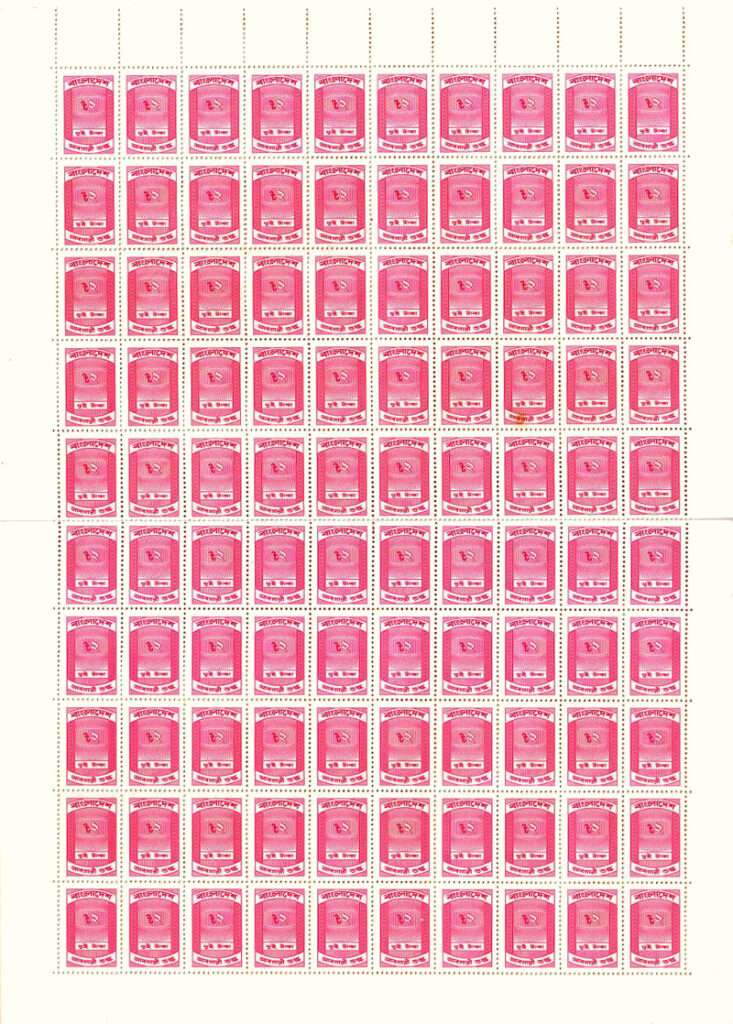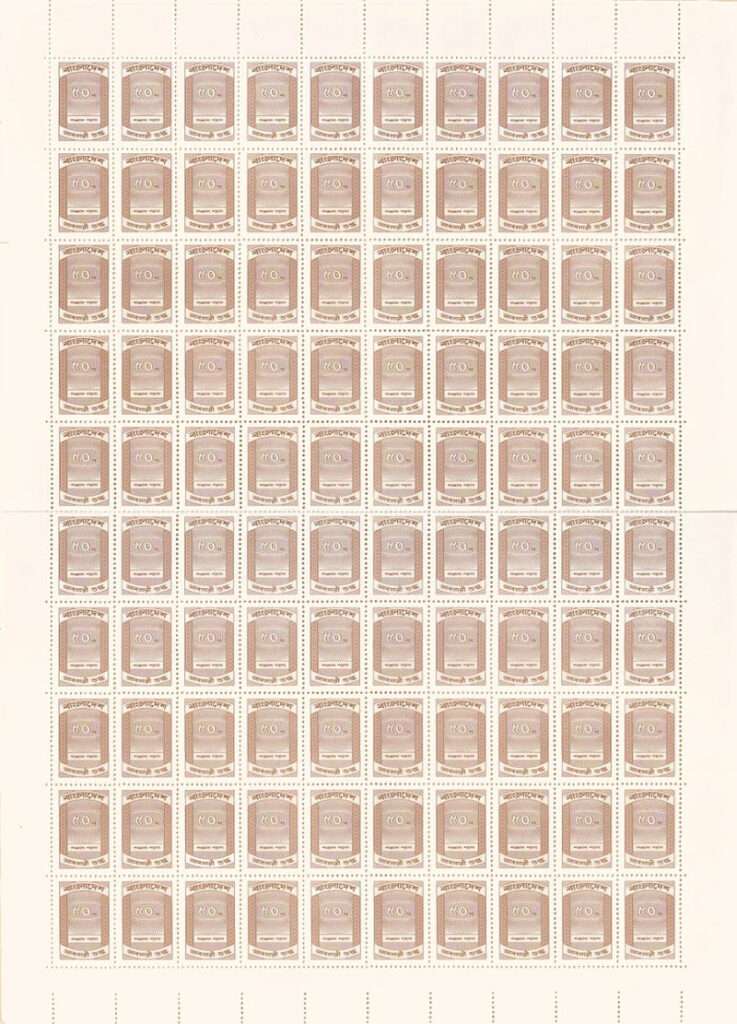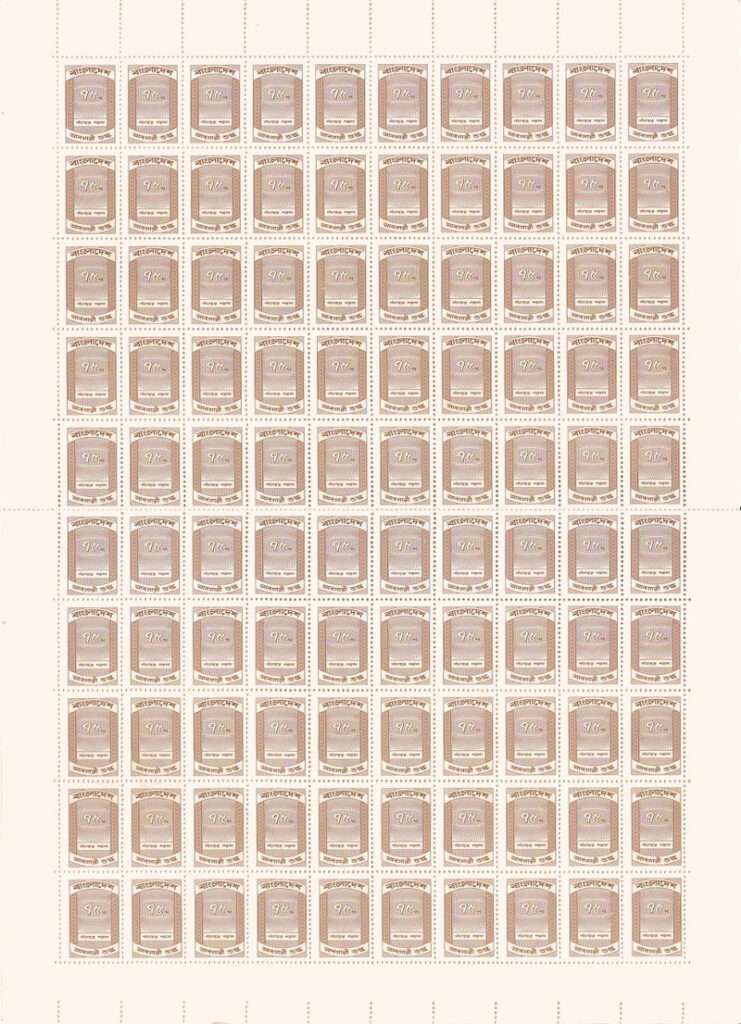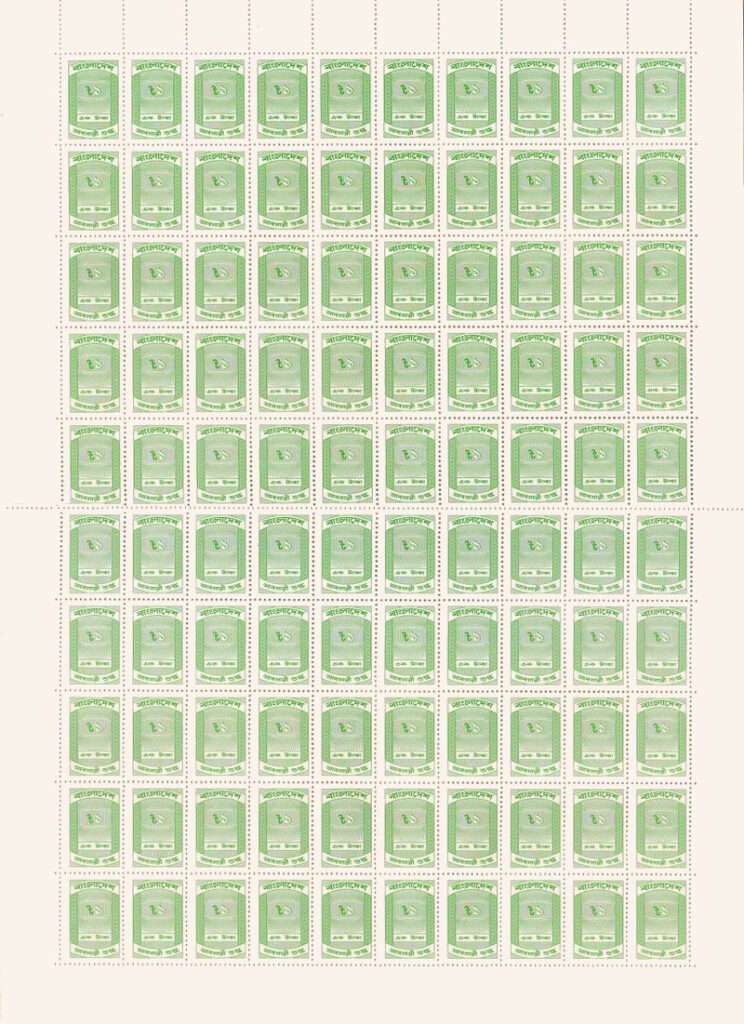Dates of Usage: ?
Used for the importation of foreign goods. To date, this is the only known design used for the Import stamps. It is not known if it was issued at one time as a complete set of stamps, or if it was issued at two different times with different denominations in each set. The writing in the horizontal panel below the denomination has two different sizes of text, indicating two distinct groups of stamps. The matter is complicated by the fact that the denominations in each group are different. There is also the possibility that there are different printings of the same stamps due to the color variations and perforation patterns. Due to the poor quality of paper and the odd perforation patterns it is likely that some, if not all, of this issue was printed in Russia by Mezhdunarodnaya Kniga, as they resemble the definitive postage stamps they printed for Bangladesh. More research is needed to clarify these issues.
YEAR (?)
Curved panels at top and bottom with vertical panels on the sides. Smaller text in panel under numerical denomination. Poisha is written to the right of the denomination and on the Taka value the Taka sign is to the left of the denomination.
Printer: Mezhdunarodnaya Kniga, USSR (?)
Perf.:
CCM: No
Plate #: No
Earliest and latest dates of documented usage:
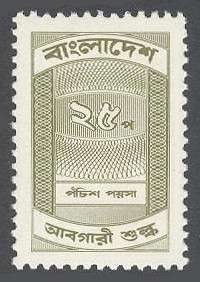
DENOMINATIONS
*10p. – olive green
*25p. – olive green
*35.p – light brown
*50p. – light brown
*75p. – light brown
*Tk.1.50 – yellow-orange.
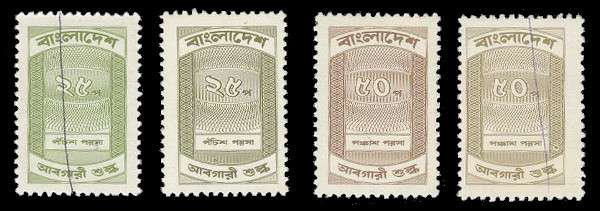
YEAR (?)
Curved panels at top and bottom with vertical panels on the sides. Larger text in panel under numerical denomination. Poisha is written to the right of the denomination and on the Taka value the Taka sign is to the left of the denomination.
Printer: Mezhdunarodnaya Kniga, USSR (?)
Perf.:
CCM: No
Plate #: No
Earliest and latest dates of documented usage:
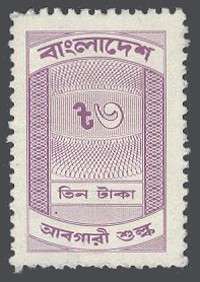
DENOMINATIONS
*20P. – olive green
*30P. – 0live green
*Tk.1 – green
*Tk.2 – red
*Tk.3 – magenta.
